.
" There are a lot of myths about engines...
easy break-in is one of the biggest "
KNOWLEDGE = POWER !!
Tecleo aquí para la versión
Español !!
--------------------------------------------------------------------------------
Warning:
This is a very controversial topic !!
I wrote "Break-In Secrets" after successfully applying this method
to approximately 300 new engines, all without any problems whatsoever.
Links to this article now appear on hundreds of motorsports discussion forums from all over the world. The reason is that over time, large numbers of people have done a direct comparison between my method and the owner's manual method, and the news of their success is spreading rapidly.
The results are always the same... a dramatic increase in power at all RPMs. In addition, many professional mechanics have disassembled engines that have used this method, to find that the condition of the engine is much better than when the owner's manual break-in method has been used.
The thing that makes this page so controversial is that there have been many other break-in articles
written in the past which will contradict what has been written here.
Several factors make the older information on break-in obsolete.
The biggest factor is that engine manufacturers now use a much finer honing pattern in the cylinders than they once did. This in turn changes the break-in requirements, because as you're about to learn, the window of opportunity for achieving an exceptional ring seal is much smaller with
newer engines than it was with the older "rough honed" engines.
In addition, there is a lot less heat build up in the cylinders from ring friction
due to the finer honing pattern used in modern engines.
The other factors that have changed are the vastly improved metal casting and machining
technologies which are now used. This means that the "wearing in" of the new parts
involves significantly less friction and actual wear than it did in the distant past.
With that in mind ...
Welcome to one of the most controversial motorsports pages on the internet !!
--------------------------------------------------------------------------------
How To Break In Your Engine For
More Power & Less Wear !
One of the most critical parts of the engine building process is the break in !!
No matter how well an engine is assembled, it's final power output is all up to you !!
Although the examples shown here are motorcycle engines,
these principles apply to all 4 stroke engines:
Street or Race Motorcycles, Cars, Snowmobiles, Airplanes & yes ...
even Lawn Mowers !!
( regardless of brand, cooling type, or number of cylinders. )
These same break in techniques apply to both steel cylinders and Nikasil, as well as the ceramic
composite cylinders that Yamaha uses in it's motorcycles and snowmobiles.
--------------------------------------------------------------------------------
What's The Best Way To Break-In A New Engine ??
The Short Answer: Run it Hard !
Why ??
Nowadays, the piston ring seal is really what the break in process is all about. Contrary to popular belief, piston rings don't seal the combustion pressure by spring tension. Ring tension is necessary only to "scrape" the oil to prevent it from entering the combustion chamber.
If you think about it, the ring exerts maybe 5-10 lbs of spring tension against the cylinder wall ...
How can such a small amount of spring tension seal against thousands of
PSI (Pounds Per Square Inch) of combustion pressure ??
Of course it can't.
How Do Rings Seal Against Tremendous Combustion Pressure ??
From the actual gas pressure itself !! It passes over the top of the ring, and gets behind it to force it outward against the cylinder wall. The problem is that new rings are far from perfect and they must be worn in quite a bit in order to completely seal all the way around the bore. If the gas pressure is strong enough during the engine's first miles of operation (open that throttle !!!), then the entire ring will wear into
the cylinder surface, to seal the combustion pressure as well as possible.
The Problem With "Easy Break In" ...
The honed crosshatch pattern in the cylinder bore acts like a file to allow the rings to wear. The rings quickly wear down the "peaks" of this roughness, regardless of how hard the engine is run.
There's a very small window of opportunity to get the rings to seal really well ... the first 20 miles !!
If the rings aren't forced against the walls soon enough, they'll use up the roughness before they fully seat. Once that happens there is no solution but to re hone the cylinders, install new rings and start over again.
Fortunately, most new sportbike owners can't resist the urge to "open it up" once or twice,
which is why more engines don't have this problem !!
An additional factor that you may not have realized, is that the person at the dealership who set up your bike probably blasted your brand new bike pretty hard on the "test run". So, without realizing it, that adrenaline crazed set - up mechanic actually did you a huge favor !!
--------------------------------------------------------------------------------
Here's How To Do It:
There are 3 ways you can break in an engine:
1) on a dyno
2) on the street, or off road (Motocross or Snowmobile.)
3) on the racetrack
--------------------------------------------------------------------------------
On a Dyno:
Warm the engine up
completely !!
Then, using 4th gear:
Do Three 1/2 Throttle dyno runs from
40% - 60% of your engine's max rpm
Let it Cool Down For About 15 Minutes
Do Three 3/4 Throttle dyno runs from
40% - 80% of your engine's max rpm
Let it Cool Down For About 15 Minutes
Do Three Full Throttle dyno runs from
30% - 100% of your engine's max rpm
Let it Cool Down For About 15 Minutes
Go For It !!
Frequently asked Question:
What's a dyno ??
A dyno is a machine in which the bike is strapped on and power is measured.
It can also be used to break in an engine.
NOTE: If you use a dyno with a brake, it's critical during break - in that you allow the engine to decelerate fully on it's own. (Don't use the dyno brake.) The engine vacuum created during closed throttle deceleration sucks the excess oil and metal off the cylinder walls.
The point of this is to remove the very small (micro) particles of ring and cylinder material which are part of the normal wear during this process. During deceleration, the particles suspended in the oil blow out the exhaust, rather than accumulating in the ring grooves between
the piston and rings. This keeps the rings from wearing too much.
You'll notice that at first the engine "smokes" on decel, this is normal, as the rings haven't sealed yet. When you're doing it right, you'll notice that the smoke goes away after about 7-8 runs.
Important Note:
Many readers have e-mailed to ask about the cool down, and if it
means "heat cycling" the engine.
No, the above "cool down" instructions only apply if you are using a dyno machine to break in your engine. The reason for cool down on a dyno has nothing to do with
"Heat Cycles" !!!
Cool Down on a dyno is important since the cooling fans used at most dyno facilities are too small to equal the amount of air coming into the radiator at actual riding speeds. On a dyno, the water temperature will become high enough to cause it to boil out of the radiator after
about 4 dyno runs. This will happen to a brand new engine just as it will
happen to a very old engine.
(Always allow the engine to cool down after 3 runs whenever you use a dyno.)
If you're breaking your engine in on the street or racetrack, the high speed incoming air will keep the engine temperature in the normal range.
(In other words, you don't have to stop by the side of the road to let your bike cool down.)
What about "heat cycling" the engine ??
There is no need to "heat cycle" a new engine. The term "heat cycle" comes from the idea that the new engine components are being "heat treated" as the engine is run. Heat treating the metal parts is a very different process, and it's already done at the factory before the engines are assembled. The temperatures required for heat treating are much higher than an engine will ever reach during operation.
The idea of breaking the engine in using "heat cycles" is a myth that came from the misunderstanding of the concept of "heat treating".
On the Street:
Warm the engine up completely:
Because of the wind resistance, you don't need to use higher gears like you would on a dyno machine. The main thing is to load the engine by opening the throttle hard in 2nd, 3rd and 4th gear.
Realistically, you won't be able to do full throttle runs even in 2nd gear on most bikes without exceeding 65 mph / 104 kph. The best method is to alternate between short bursts of hard acceleration and deceleration. You don't have to go over 65 mph / 104 kph to properly load the rings. Also, make sure that you're not being followed by another bike or car when you decelerate, most drivers won't expect that you'll suddenly slow down, and we don't want
anyone to get hit from behind !!
The biggest problem with breaking your engine in on the street (besides police) is if you ride the bike on the freeway (too little throttle = not enough pressure on the rings) or if you get stuck in slow city traffic. For the first 200 miles or so, get out into the country where you can vary the speed more
and run it through the gears !
Be Safe On The Street !
Watch your speed ! When you're not used to the handling of a new vehicle, you should accelerate only on the straightaways, then slow down extra early for the turns. Remember that both hard acceleration and hard engine braking (deceleration) are equally important during the break in process.
On the Racetrack:
Warm the engine up completely:
Do one easy lap to warm up your tires. Pit, turn off the bike & check for leaks or
any safety problems. Take a normal 15 minute practice session
and check the water temperature occasionally. The racetrack is the perfect environment to break in an engine !! The combination of acceleration and deceleration is just the ticket for sealing the rings.
Go For It !!
--------------------------------------------------------------------------------
Yeah - But ...
the owner's manual says to break it in easy ...
Notice that this technique isn't "beating" on the engine, but rather taking a purposeful, methodical approach to sealing the rings. The logic to this method is sound. However, some will have a hard time with this approach, since it seems to "go against the grain".
The argument for an easy break-in is usually: "that's what the manual says" ....
Or more specifically: "there are tight parts in the engine and you might do damage or even seize it if you run it hard."
Consider this:
Due to the vastly improved metal casting and machining technologies which are now used, tight parts in new engines are not normal. A manufacturing mistake causing a tight clearance is an extremely rare occurrence these days. But, if there is something wrong with the engine clearances from the factory, no amount of gentle running will fix the problem.
The real reason ???
So why do all the owner's manuals say to take it easy for the first
thousand miles ???
This is a good question ...
--------------------------------------------------------------------------------
Q: What is the most common cause of engine problems ???
A: Failure to:
Warm the engine up completely before running it hard !!!
Q: What is the second most common cause of engine problems ???
A: An easy break in !!!
Because, when the rings don't seal well, the blow-by gasses contaminate the oil with acids and other harmful combustion by-products !!
Ironically, an "easy break in" is not at all what it seems. By trying to "protect" the engine, the exact opposite happens, as leaky rings continue to contaminate your engine oil for the rest of the life of your engine !!
--------------------------------------------------------------------------------
What about running it in the garage ???
Maybe you have a new snowmobile and it's not quite winter yet, or a new bike and it's snowing...
The temptation to fire up a new vehicle in the garage just to "hear"
the new engine run can be very strong.
This is the worst thing for a new engine, in fact, my advice is:
don't even start it up until you're ready to warm it up for the first ride.
The reason is that brand-new rings don't seat all the way around the 360 degrees of their circumference. The gas pressure from hard acceleration forces the rings to contact the cylinder around their entire circumference, which is the only way the rings can properly wear into the exact shape of the cylinder to seal the combustion pressure.
Now, imagine if the engine is run in the garage. There is no load on the engine, so the rings are just going up and down "along for the ride". Only a small portion of their surface is actually contacting the cylinder wall. The ring area that does contact the cylinder wears down the roughness of the honing pattern on the cylinder walls. Once the roughness of the cylinder is gone, the rings stop wearing into the cylinder. If this happens before the entire ring has worn into the cylinder and sealed, you will have a slow engine no matter how hard it gets ridden after that point.
The difference between what happens in an engine running in the garage, versus one being ridden is a hard concept to put into written words, so if I may use the sounds that we all can relate to: it's the difference between "zing-zing-zing" and "bwaaaaaaaaaAAAAAA"
During "zing-zing-zing" the rings don't get loaded for more than a split second, whereas during "bwaaaaaAAAAAA", the engine is in 100% ring sealing mode.
--------------------------------------------------------------------------------
Recent Snowmobile Info:
Yamaha's break-in recommendation for the RX1 has been to idle the engine for 15 minutes.
Some owners found that the heat build up from doing this was so extreme,
that their taillight had begun melting (!!!)
Yamaha has since changed the recommendation to three 5 minute idle periods.
Why would Yamaha recommend a break in method which will prevent the rings
from sealing as well as possible ??
This is a good question ...
--------------------------------------------------------------------------------
A Picture's Worth A Thousand Words:
The piston on the right was broken in as
per MotoMan's instructions.
After a full season of hard racing:
- Perfect Ring Seal ...
- No Scuffing ...
- Lots of Trophies !!!
These Honda F3 pistons show
the difference.
Although these pistons came out of engines which were raced for a full season, they weren't set-up with any special clearances or other preparation.
These engines were never worked on prior to being raced. They were totally stock as built by Honda.
The only difference was the break in method they used...
The one on the right was broken in as per MotoMan's instructions.
The one on the left was broken in exactly according to the owner's manual. The resulting leaky rings have allowed pressure to "blow by" down into the crankcase on acceleration, and oil to "suck-up" into the combustion chamber on deceleration.
Needless to say, this bike was slow !!
It's up to you:
The loss in power from an easy break-in and the resulting poor ring seal can be
anywhere from 2% - 10% !!
In other words:
The gain in power from using this break-in method can be anywhere from 2% - 10% !!
--------------------------------------------------------------------------------
Update -
Some have felt that the piston which was broken in hard in the above photo is too clean to be true !!
"That piston is impossible, there must be some trick going on."
So, here I present: "The Impossible Piston Museum"
Here are 14 pistons from 14 different bikes, with several manufacturers represented. Some are from streetbikes and some from racebikes.
All of the engines had the correct jetting, the reason some have black carbon deposits is because they were run on "pump gas", which burns dark regardless of the jetting. Whereas the lighter ones were run on oxygenated race fuel, which gives a very light tan to gray color. (Many of the black-carboned pistons were from racebikes.)
Disclaimer:
Absolutely no photo altering or physical cleaning of the pistons is allowed in the museum !!
We run a legit exhibit, and all the artifacts on display are 100% genuine.
Note:
The controversial piston in the above picture is the last one in the middle row,
and it's indicated by the arrows.
You can take a closer look by clicking on the photos to see the full sized versions:
.
.
<<
It looks like there are more than 14 pistons, because the area in the 3 photos overlap.
It's 3 segments of a panorama photo to give you multiple views of this extraordinarily rare collection.
The pistons have been stacked for display purposes only, they aren't going back into engines. Always be super careful when handling pistons, as the aluminum is soft and very easily dented, causing combustion leakage, and friction ... neither of which is good for power.
As in any museum, some of the specimens are better examples than others, but the point is that none have any leakage past the top ring, because they were all broken in by the method described here !
The only impossible thing about these pistons ... is that it's impossible to achieve this result with an easy break-in.
--------------------------------------------------------------------------------
What about street bikes ???
This piston is from a 650 Honda Hawk. The brown discoloration that extends up into the piston pin bore is burnt oil from the extreme heat leaking past all 3 rings !!
The uneven heat leakage was so bad, that it caused the cylinder to distort and become out of round, causing piston to cylinder scuffing in the tight part of the "oval" cylinder.
When I showed the customer his
pistons, he said:
" I don't understand how that happened, I followed the owner's manual break-in instructions 100% !! "
Why would Honda recommend a break in method which will prevent the
rings from sealing as well as possible ??
This is a good question ...
--------------------------------------------------------------------------------
Q: What's the third most common cause of engine problems ???
A: Not changing the oil soon enough after the engine is first run !!
Change Your Oil Right Away !!
The best thing you can do for your engine is to change your oil and filter after the first 20 miles. Most of the wearing in process happens immediately, creating a lot of metal in the oil. Plus, the amount of leftover machining chips and other crud left behind in the manufacturing process is simply amazing !! You want to flush that stuff out before it gets recycled and embedded in the transmission gears, and oil pump etc...
Why do the manufacturers recommend waiting until 600 miles to
flush out all the loose metal ???
This is a good question ...
--------------------------------------------------------------------------------
3 more words on break- in:
NO SYNTHETIC OIL !!
Use Valvoline, Halvoline, or similar 10 w 40 Petroleum Car Oil for at least
2 full days of hard racing or 1,500 miles of street riding / driving.
After that use your favorite brand of oil.
--------------------------------------------------------------------------------
Viewer Questions:
Q: If break- in happens so quickly, why do you recommend using petroleum break- in oil for 1500 miles ??
A: Because while about 80% of the ring sealing takes place in the first hour of running the engine,
the last 20% of the process takes a longer time. Street riding isn't a controlled environment, so most of the mileage may
not be in "ring loading mode". Synthetic oil is so slippery that it actually "arrests" the break in process before the rings can seal completely. I've had a few customers who switched to synthetic oil too soon, and the rings never sealed properly no matter how hard they rode. Taking a new engine apart to re - ring it is the last thing anyone wants to do, so I recommend a lot
of mileage before switching to synthetic. It's really a "better safe than sorry" situation.
Q: My bike comes with synthetic oil from the factory, what should I do ??
A: I recommend changing the factory installed synthetic oil back to petroleum for the break-in period.
Q: What about the main and rod bearings, don't they break - in ??
A: Actually, the operation of plain bearings doesn't involve metal to metal contact !! The shiny spots on used
bearings are caused from their contact with the crankshaft journals during start up after the engine has been sitting a while,
and the excess oil has drained off. This is the main reason for not revving up the engine when it's first started.
The subject of plain bearings is one of the most mysterious aspects of engines, and will be covered in a future issue
of Power News. In it, I'll reveal more information that fully explains the non-contact phenomenon.
Q: Why change the oil at 20 miles ?? Doesn't the oil pick up
screen catch the aluminum bits ???
A: It's true that the screen stops the big pieces, but many areas of the engine aren't within the oil filtration system. The oil that is splashed around will circulate metal debris to the lubricated bearing surfaces. For example, transmission gears and their ball bearings are unprotected by the filtration system, and even the cam chain makes a perfect "conveyer belt" to
bring metal debris up into the cylinder head !!
A close examination of a new engine will reveal lots of aluminum deposits on steel parts. This aluminum coats and tightens
up the clearances of the parts, which creates a loss of power. Most of the time I spend "blueprinting"
an engine is actually inspecting every part and "de-aluminizing" them !!
I prefer to remove the oil pan and clean the aluminum bits out of a new engine out that way, but a $20 oil change
is an easy and inexpensive way to flush the initial particles that come loose in the first miles.
Q: What about motorcycle V.S. car oils ???
A: This is a topic all by itself !! It will be covered in a future issue of Power News.
Q: Will this break - in method cause my engine to wear out faster ???
A: No, in fact, a poor ring seal will allow an increase in the by products of combustion to contaminate the oil.
Acid contamination and oil consumption are the 2 reliability problems which are the result of an
"owner's manual" or "magazine tech article" style easy break-in.
By following the instructions on this page, you'll find that your oil is cleaner and the engine will rev quicker.
Plus, you'll have much better torque and power across the power range from the vastly improved ring seal.
Reliability and Power are 100% connected !!
--------------------------------------------------------------------------------
What are some of the other common myths about engines ??
Here are some popular engine tuning concepts in which the truth is
quite the opposite of what is commonly thought:
- Bigger Ports
- Polishing The Ports
- Ignition Advancers
- Flatslide Carburetors
- Fuel Injection Tuning
- Cam Timing
- Jetting
Intake Porting !!
Smaller Intake Ports Gain 7 % More Power !!
Never Before Seen in Magazines
.
Learn How to Do it Yourself !!
If you've found the Break In Secrets article interesting, please sign up for Power News Magazine.
Find out why the manufacturers recommend an easy break in,
and the revealing evidence which provides answers to those good questions
we've all wondered about.
(The questions the manufacturers wish you wouldn't ask ...)
Plus, find out how much more power the readers of this page have gained, as well as
photos and analysis of other engine parts in long term tests of this process.
Whether you're into motorcycles, cars or snowmobiles, Power News Magazine contains
the most provocative engine tech articles in the world ...
... you'll never think about engines in the same way again !!
Over 12,000 Subscribers !!
Sign Up Now !!
MotoMan's
" Power News Rocks !! "
Amazing New Information
Never Seen in Motorcycle Magazines !!
Now get instant access to the
secret links to all 23 past issues
of Power News !!
.
It's Free
Just Enter Your E Mail Address Here:
Then Click Here:
If You Like
If you feel that Power News will help you get more fun
out of your vehicle ...
Then, I'd like to ask you to take some time and help me out.
Please tell your friends about it !!
And... if you roadrace, forward this
to your Mechanic !!
Thanks for all your support !!
- Pat McGivern aka "MotoMan"
Tell 3 Friends About
Click Here:
Tell Your Friends About
Power News !!!
Hey.Superbikers:
Tech Questions ?
Fan Mail ?
Feedback ?
Click Here:
E-Mail
MotoMan !
Click Here:
Don't Let Your Bike Lose Power This Winter !!
Hey./............ Superbikers:
Tech Questions ?
Fan Mail ?
Feedback ?
Click Here:
E-Mail
MotoMan !
.
l
.
.
Navigation Menu
Mototune USA Home
Motorcycle & Roadracing Tech Features:
|| The 172 MPH Yamaha R6 Factory Beater ||
|| Cheating ?? Kawasaki Zx6r Teardown ||
|| Danger: Tip Over Switch Warning !! ||
|| The Roadracing Info Page ||
Break In Secrets || Winterize Your Bike
Roadracing Action Photos & Stories:
2002
Sweden - Anderstorp || California - Sears Point
2001
Dominican Republic || Canada || Road America AMA
Blackhawk || St. Louis
2000
Blackhawk Final || St. Louis || Laguna WSB
Blackhawk June || Brainerd AMA
Seattle || Road America AMA || Blackhawk May
Road America CCS || Portland
|| Daytona: Featuring Team Yamaha Motor Norway ||
Wild Fun Stuff:
Wild Girls || Wild News || Wild Java Art || Wild #1 || Wild #2
Fan Mail || SuperLinks
.
Visit ...
Budweiser !
.
Click Here:
Ice Cold Bud !!
Help Support Mototune USA:
Please Click Here Daily:
This Banner Leads To 100's of Other Cool Superbikes & Babes Sites !!
Your " Click " Helps Drive Traffic To Mototune USA With a Vote on The Top 100 Superbike Websites Contest !!
Thanks For All Your Help ! !
http://www.mototuneusa.com/break_in_secrets.htm
![]()
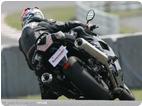
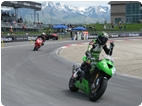
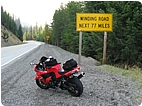

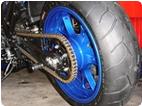
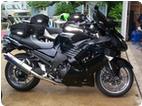
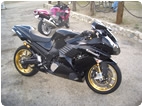




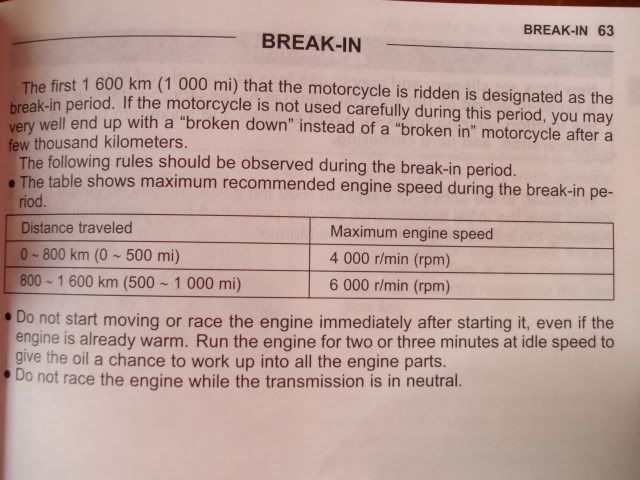 [/img]
[/img]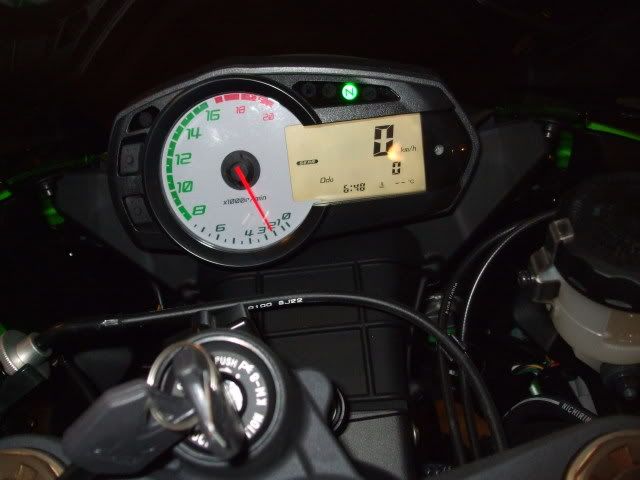 [/img]
[/img] We block checking your fundamentals wit the fun of fundamentals is answer those absolute steps so there is no controversy is the math is your guide and I cannot give back proper change from a dollar or a pound sterling.
We block checking your fundamentals wit the fun of fundamentals is answer those absolute steps so there is no controversy is the math is your guide and I cannot give back proper change from a dollar or a pound sterling.